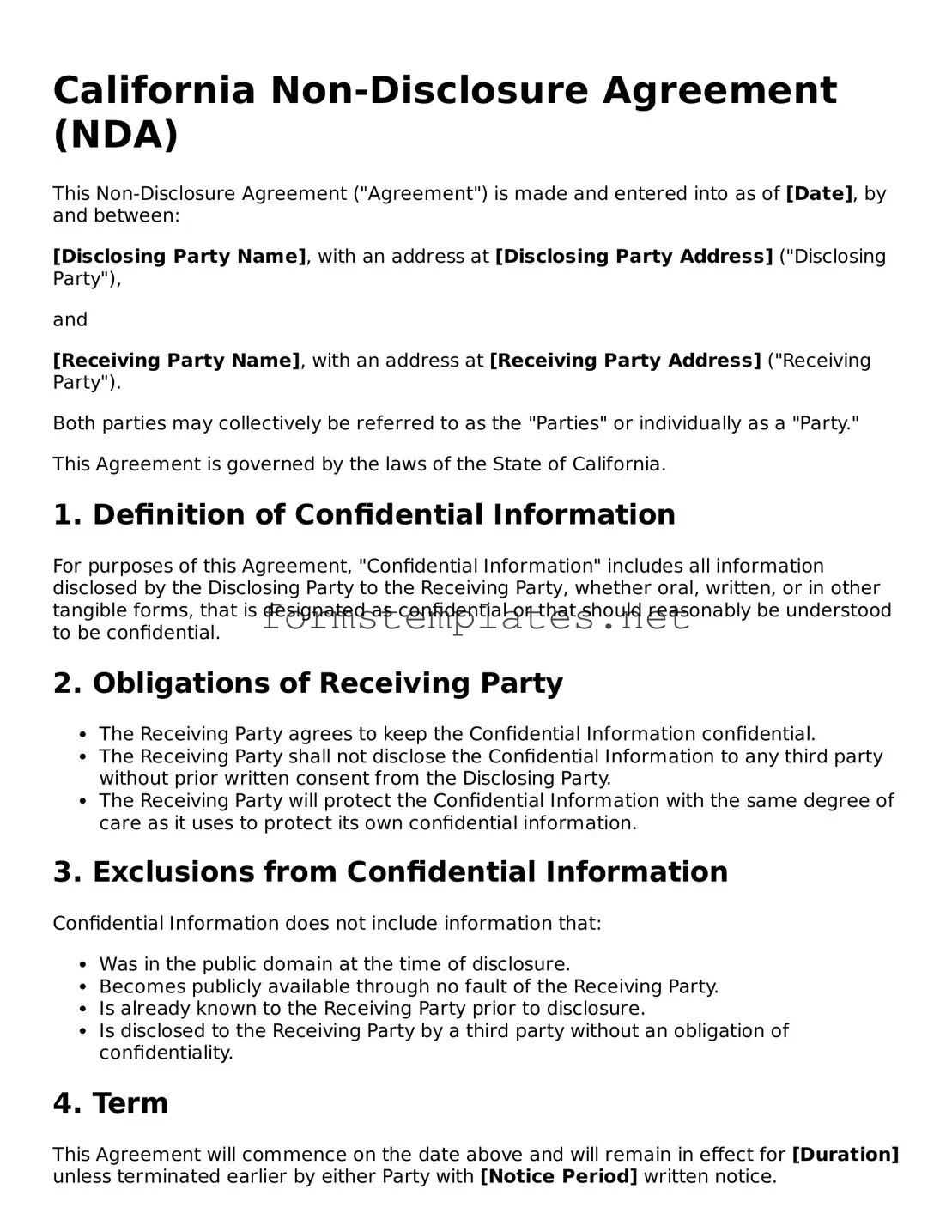California Non-Disclosure Agreement (NDA)
This Non-Disclosure Agreement ("Agreement") is made and entered into as of [Date], by and between:
[Disclosing Party Name], with an address at [Disclosing Party Address] ("Disclosing Party"),
and
[Receiving Party Name], with an address at [Receiving Party Address] ("Receiving Party").
Both parties may collectively be referred to as the "Parties" or individually as a "Party."
This Agreement is governed by the laws of the State of California.
1. Definition of Confidential Information
For purposes of this Agreement, "Confidential Information" includes all information disclosed by the Disclosing Party to the Receiving Party, whether oral, written, or in other tangible forms, that is designated as confidential or that should reasonably be understood to be confidential.
2. Obligations of Receiving Party
- The Receiving Party agrees to keep the Confidential Information confidential.
- The Receiving Party shall not disclose the Confidential Information to any third party without prior written consent from the Disclosing Party.
- The Receiving Party will protect the Confidential Information with the same degree of care as it uses to protect its own confidential information.
3. Exclusions from Confidential Information
Confidential Information does not include information that:
- Was in the public domain at the time of disclosure.
- Becomes publicly available through no fault of the Receiving Party.
- Is already known to the Receiving Party prior to disclosure.
- Is disclosed to the Receiving Party by a third party without an obligation of confidentiality.
4. Term
This Agreement will commence on the date above and will remain in effect for [Duration] unless terminated earlier by either Party with [Notice Period] written notice.
5. Return of Materials
Upon termination of this Agreement, the Receiving Party agrees to return or destroy all materials containing Confidential Information at the request of the Disclosing Party.
6. Governing Law
This Agreement shall be governed by and construed in accordance with the laws of the State of California.
7. Entire Agreement
This Agreement constitutes the entire understanding between the Parties and supersedes all prior agreements, whether written or oral, regarding the subject matter hereof.
IN WITNESS WHEREOF, the Parties hereto have executed this Non-Disclosure Agreement as of the date first above written.
[Disclosing Party Name]
Signature: ______________________
Name: ___________________________
Title: ____________________________
[Receiving Party Name]
Signature: ______________________
Name: ___________________________
Title: ____________________________
